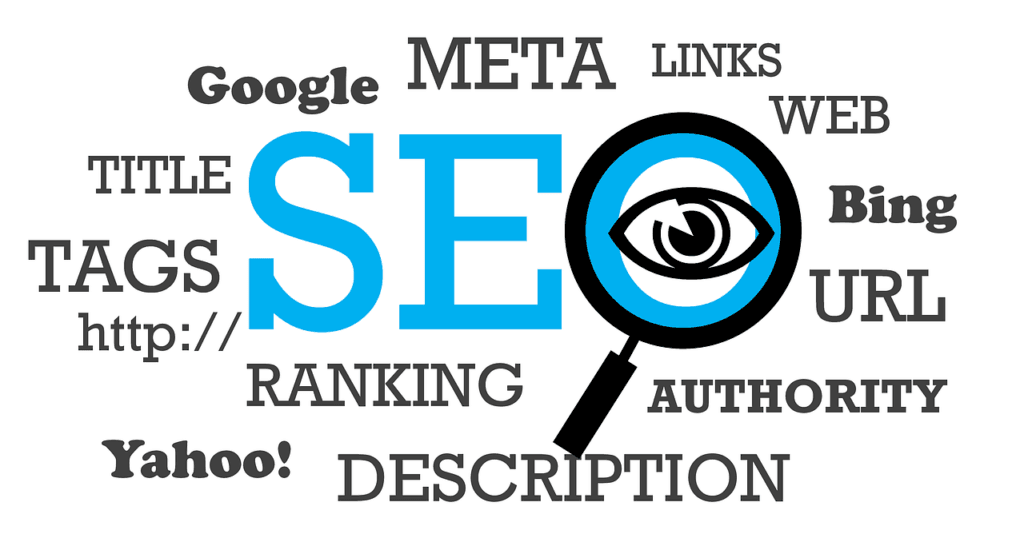This Article has been revised, edited and added to, by Poulomi Chakraborty.
- Press Releases in the Digital Age: More Than Just Announcements
- A Bridge to the Target Audience
- SEO: A Game-Changer for Press Releases
- The Risks of Ignoring SEO
- Evolving Beyond Traditional Media
- The Power of Direct Narrative Control
- Engaging Through Storytelling
- Interactive Elements Enhance Engagement
- Leveraging the Multimedia Approach
- Strategic Partnerships for Broader Reach
- Continuous Engagement Beyond the Release
- The Heart of the Matter: Keyword Research for Press Releases
- Why Keywords Matter in Press Releases
- Tools of the Trade: Starting Your Keyword Research
- Understanding User Intent
- Deepening Keyword Research with Semantic Analysis
- Crafting a Keyword Strategy Aligned with Brand Goals
- Utilizing Advanced Keyword Tools for Competitive Advantage
- The Role of AI and Machine Learning in Keyword Optimization
- Integrating Keywords with Narrative Flow
- Geographic Tailoring for Localized Impact
- Future-Proofing Keyword Choices
- Crafting the Perfect Keyword-Optimized Press Release: A Step-by-Step Guide
- The Headline: Making a Lasting First Impression
- The Lead: Drawing Readers In
- Body: Informative and Engaging
- Boilerplate: Reinforcing Your Startup's Identity
- Establishing a Foundation with Keyword Integration
- Enhancing Visibility Through Strategic Keyword Placement
- Creating a Compelling Narrative
- The Importance of Keyword Contextualization
- Optimizing the Closing Sections
- Leveraging the Power of Headlines and Subheadings
- Distribution and Promotion: Getting Your Press Release Out There
- Choosing the Right Distribution Platforms
- Leveraging Social Media
- Paid Promotion: Amplifying Reach
- Maximizing Reach Through Tailored Distribution Channels
- Enhancing Visibility Through Strategic Timing
- Building Relationships with Influencers and Journalists
- Utilizing Paid Promotion to Amplify Reach
- Harnessing the Power of Multimedia
- Engaging with Your Audience Post-Distribution
- Tracking and Analysis: Measuring the Impact
- Overcoming Common Pitfalls: Ensuring Your Press Release Shines
- Beyond the Release: Sustaining the Momentum
- Repurposing Content
- Engaging with the Community
- Continuous Monitoring
- Cultivating a Content Ecosystem Around Your Press Release
- Leveraging Engagement Through Social Media Conversations
- Strategic Follow-Up with Media and Influencers
- Monitoring Trends and Adapting Strategies
- Repurposing Press Release Content for Different Formats
- Keeping the Narrative Alive
- In Conclusion: Press Releases as Catalysts of Startup Visibility
In the modern startup ecosystem, breaking through the noise and capturing the attention of the target audience and media outlets can be challenging. Every announcement, product launch, or significant update competes with hundreds of others in the newsfeeds. But what if there was a way to steer your press release to the spotlight? Enter the realm of keyword research for press releases.
Traditionally, press releases aimed to catch the eye of journalists and industry insiders. Today, with digital transformation, they’ve become a potent tool in the online space, serving dual purposes: informing both the media and the general public. When crafted with SEO principles in mind, specifically effective keyword research, press releases can significantly amplify a startup’s online visibility.
Embark on this journey to unravel the synergy between keyword research and press releases, and how startups can harness this power duo to ensure their news not only gets heard but also reverberates across the digital landscape.
Press Releases in the Digital Age: More Than Just Announcements

Before diving into the intricacies of keyword research, it’s essential to grasp the evolving role of press releases in today’s digital age.
A Bridge to the Target Audience
While the primary objective remains to inform the media:
- Direct Engagement: With online distribution channels, press releases reach the target audience directly, allowing startups to convey their narrative unfiltered.
- Feedback Loop: Online press releases enable immediate feedback, be it through comments, shares, or engagement metrics.
SEO: A Game-Changer for Press Releases
Search engines have altered the way press releases impact visibility:
- Search Visibility: Optimized press releases can rank in search engine results, driving organic traffic to the startup’s website or news portal.
- Link Building: Well-placed press releases on authoritative platforms can garner valuable backlinks, bolstering the startup’s SEO profile.
The Risks of Ignoring SEO
Without SEO:
- Lost in the Crowd: Even the most groundbreaking news might remain unseen if it doesn’t rank on search engines.
- Missed Opportunities: Potential investors, partners, or customers might be on the lookout for the exact news or update you’re sharing. But without optimization, they might never come across it.
Evolving Beyond Traditional Media
In today’s hyper-connected world, press releases serve as more than mere announcements; they are pivotal tools in strategic digital communication. This evolution from traditional newsprint to digital dynamism offers startups an unprecedented opportunity to control their narratives and reach audiences directly, bypassing traditional gatekeepers like mainstream media.
The Power of Direct Narrative Control
Startups can now use press releases to shape their story authentically and transparently, which is essential in building trust and credibility with their audience. This direct narrative control allows companies to highlight their innovations, values, and vision without distortion. It’s not just about delivering news—it’s about building an ongoing dialogue with the people who matter most to your business.
Engaging Through Storytelling
To capitalize on this shift, consider framing your press releases as stories rather than mere announcements. Storytelling engages readers and can make your content more relatable and memorable. Share the challenges your startup has overcome, the milestones you’ve achieved, or the future you’re building towards. Each press release should contribute to a larger narrative arc that tells the evolving story of your startup.
Interactive Elements Enhance Engagement
Integrating interactive elements such as embedded videos, links to a blog post, or interactive infographics can transform your press release from a static piece of text to an engaging experience. These elements can significantly increase the time readers spend with your content, which signals to search engines that your content is valuable—boosting your SEO efforts.
Leveraging the Multimedia Approach
A multimedia approach ensures that your message resonates across different sensory channels. For instance, including a video summary of the press release can cater to visual learners and those who prefer video over text, expanding your reach and impact. Additionally, audio snippets or podcasts discussing the announcement can tap into the growing audience that prefers listening, making your press release accessible to an even broader audience.
Strategic Partnerships for Broader Reach
Partnering with other startups or established businesses for cross-promotion in your press releases can extend your reach. This strategy allows you to tap into your partners’ audiences, significantly amplifying your message beyond your existing followers. Choose partners whose businesses complement yours, ensuring that the partnership is beneficial and relevant to both parties’ audiences.
Continuous Engagement Beyond the Release
Instead of viewing press releases as one-off events, treat them as the beginning of a conversation. After the release, engage with your audience through social media or follow-up posts to discuss key points or answer questions raised by the press release. This continuous engagement helps maintain interest in your startup and can lead to higher conversion rates over time.
The Heart of the Matter: Keyword Research for Press Releases
Just as with other content forms, the success of a press release in the digital space hinges on the keywords it incorporates.
Why Keywords Matter in Press Releases
- Relevance: Keywords ensure your press release appears in relevant searches, connecting you with an audience actively seeking your news.
- Competitive Edge: In a sector buzzing with startups, the right keywords can set your news apart, ensuring it reaches the top of search results.
Tools of the Trade: Starting Your Keyword Research
Embarking on keyword research? Arm yourself with the right tools:
- Google Keyword Planner: A free tool from the search giant itself, it offers insights into keyword volumes and competitiveness.
- SEMrush or Ahrefs: These comprehensive platforms provide deeper insights, from keyword suggestions to ranking possibilities.
Understanding User Intent
It’s not just about the keyword but the intention behind it:
- Informational vs. Transactional: Is the searcher looking for information, or are they closer to making a decision? Tailor your press release to match the intent.
- Local vs. Global: For startups targeting a specific region, understanding and optimizing for local search terms can be pivotal.
Deepening Keyword Research with Semantic Analysis
In the realm of keyword research, it’s vital to go beyond basic keyword selection and delve into semantic analysis. This involves understanding the context and variations of keywords that your target audience uses. By incorporating semantic analysis, startups can ensure their press releases resonate more deeply with their audience and search engines, enhancing both relevance and reach.
Crafting a Keyword Strategy Aligned with Brand Goals
Developing a keyword strategy should align closely with your startup‘s long-term branding and marketing objectives. Keywords should reflect not only what your news entails but also how it aligns with your overall brand message. This strategic alignment helps in maintaining a consistent brand voice across all channels, reinforcing brand recognition and loyalty among your target audience.
Utilizing Advanced Keyword Tools for Competitive Advantage
Leverage advanced keyword research tools like Moz’s Keyword Explorer or KWFinder to uncover less obvious, highly targeted keywords that can differentiate your press release from competitors’. These tools can provide insights into keyword difficulty, search volume, and even predict keyword potential, allowing you to make more informed decisions and potentially capture niche markets.
The Role of AI and Machine Learning in Keyword Optimization
Incorporate AI-driven tools to refine your keyword strategy. Platforms such as MarketMuse or Clearscope use machine learning to analyze content and suggest keyword optimizations based on current ranking factors and competitive content. These tools help ensure your press release is not only optimized for today’s SEO landscape but is also set to adapt to changing algorithms.
Integrating Keywords with Narrative Flow
The integration of keywords into your press release should never disrupt the narrative flow. Instead, it should enhance the storytelling aspect of your release. Use keywords to build upon the narrative, strategically placing them where they naturally enhance the message, rather than merely inserting them to tick off SEO checkboxes.
Geographic Tailoring for Localized Impact
For startups focusing on specific geographical markets, local keyword optimization becomes crucial. Understand and implement local search terms that resonate with regional audiences. This can significantly boost your visibility in local search results, making your press release more relevant and impactful within targeted communities.
Future-Proofing Keyword Choices
Anticipate future trends and changes in user behavior by choosing keywords that are likely to gain relevance. Use predictive analytics tools and trend forecasting to stay ahead of the curve. This proactive approach can position your startup as a leader in your industry, particularly in presenting news that sets the agenda rather than follows it.
Crafting the Perfect Keyword-Optimized Press Release: A Step-by-Step Guide

Having the right keywords is only half the battle. Seamlessly integrating them into your press release is where the magic happens. Here’s a detailed guide to ensure your startup’s announcement shines.
The Headline: Making a Lasting First Impression
Your headline is arguably the most crucial part of your press release:
- Incorporate the Primary Keyword: Your main keyword should naturally fit within the headline, ensuring it captures the essence of your announcement.
- Keep it Concise: Aim for a headline that’s impactful yet short enough to be easily shared and remembered.
- Invoke Curiosity: While it should be descriptive, an element of intrigue can entice readers to delve deeper.
The Lead: Drawing Readers In
The first paragraph sets the tone:
- Keyword Placement: Incorporate your primary or a relevant secondary keyword without compromising the flow.
- Address the 5 W’s: Who, what, when, where, and why. Provide readers with a snapshot of the essential details of your announcement.
Body: Informative and Engaging
The main content of your press release should be a balance of information and engagement:
- Natural Keyword Integration: Use keywords organically. Avoid stuffing; it should read smoothly.
- Subheadings and Bullets: Break up the content using subheadings (which can also be keyword-optimized) and bullet points for easier readability.
- Quotable Content: Include statements or data points that journalists or bloggers might quote. This not only offers value but can also serve as potential backlink opportunities.
Boilerplate: Reinforcing Your Startup’s Identity
This section, typically at the end of the press release, provides information about your startup:
- Descriptive Keywords: Use terms that best describe your startup’s niche, offerings, and unique selling points.
- Consistency is Key: While you can slightly tweak the boilerplate based on the press release topic, maintaining a consistent format and style reinforces brand identity.
Establishing a Foundation with Keyword Integration
When crafting a keyword-optimized press release, the initial focus must be on seamlessly integrating keywords into the narrative. Start by identifying the primary keyword that best represents the core of your announcement and ensure that it features prominently in your headline and opening paragraph. This primary keyword should serve as the cornerstone of your narrative, guiding the thematic structure of your content.
Enhancing Visibility Through Strategic Keyword Placement
The strategic placement of keywords throughout the press release can significantly enhance its visibility. Incorporate secondary keywords that support your main keyword to add depth to your content and increase its discoverability. These keywords should be woven into the fabric of your press release in a way that maintains a natural and engaging tone, ensuring that the readability remains high while still optimizing for search engines.
Creating a Compelling Narrative
A compelling narrative is key to retaining reader interest and enhancing the shareability of your press release. Craft your content to tell a story that connects emotionally with your audience, using your keywords as anchors that reinforce the message. Focus on creating a strong lead that hooks the reader by addressing the ‘why’ behind the announcement, which is often more compelling than the ‘what’.
The Importance of Keyword Contextualization
Beyond mere keyword placement, contextualizing your keywords can profoundly impact the effectiveness of your SEO efforts. Discuss how these keywords relate not only to your announcement but also to larger industry trends or issues. This contextualization helps to establish your startup as a thought leader and makes your press release more relevant to the target audience, increasing the likelihood of engagement and media pickup.
Optimizing the Closing Sections
In the closing sections of your press release, reinforce the message with a strong call to action (CTA) that encourages readers to take a specific step, such as visiting your website, signing up for more information, or following your social media channels. Use your keywords here again to reinforce the themes and SEO strength of your document, ensuring consistency and focus throughout.
Leveraging the Power of Headlines and Subheadings
Effective headlines and subheadings play a critical role in drawing attention and guiding readers through the content. Make sure these elements are not only attention-grabbing but also incorporate your primary and secondary keywords. A well-optimized headline can greatly increase the chances of your press release appearing in relevant searches, while subheadings can help to organize the content, making it more digestible and enhancing the overall reader experience.
Distribution and Promotion: Getting Your Press Release Out There
With your keyword-optimized press release ready, the next challenge is distribution.
Choosing the Right Distribution Platforms
- Industry-Specific Outlets: For niche startups, platforms catering specifically to their industry can yield better results.
- Broad Spectrum Platforms: Platforms like PR Newswire or Business Wire have a vast reach, suitable for announcements with broader appeal.
Leveraging Social Media
- Hashtags and Keywords: When sharing your press release on platforms like Twitter or LinkedIn, incorporate relevant hashtags alongside your keywords to expand reach.
- Engaging Visuals: Attach eye-catching images or infographics related to the press release to boost social media engagement.
Paid Promotion: Amplifying Reach
For significant announcements, consider allocating a budget for promotion:
- Search Engine Marketing (SEM): Platforms like Google Ads can promote your press release, targeting specific keywords.
- Social Media Ads: Platforms like Facebook and LinkedIn offer targeted ad options, ensuring your press release reaches a segmented audience, from industry professionals to potential investors.
Maximizing Reach Through Tailored Distribution Channels
Identifying the most effective distribution channels is crucial for ensuring your press release reaches its intended audience. Start by analyzing where your target audience consumes content most frequently. For B2B startups, platforms like LinkedIn or industry-specific news outlets may be most effective, whereas consumer-focused startups might find better engagement through broader platforms such as Twitter or Facebook. Consider also the use of email newsletters as a direct line to those who have already shown interest in your startup’s offerings.
Enhancing Visibility Through Strategic Timing
The timing of your press release distribution can significantly impact its effectiveness. Evaluate when your target audience is most active online and schedule the release to coincide with these peak times. Additionally, consider the timing of industry events, major holidays, or news cycles that might affect the visibility of your press release. Aligning your distribution with these elements can provide a natural boost in attention and engagement.
Building Relationships with Influencers and Journalists
Developing relationships with key influencers and journalists who cover your sector can amplify the reach of your press releases. Prior to distribution, engage with these individuals through social media or industry events. Provide exclusive insights or early access to your press release to encourage these influencers to share your news with their audiences. This relationship-building strategy can significantly enhance the credibility and reach of your announcements.
Utilizing Paid Promotion to Amplify Reach
For critical announcements, consider using paid promotion to ensure your press release cuts through the noise. Platforms like Google Ads and Facebook offer targeted advertising options that can increase the visibility of your press release to specific demographics, geographic regions, and user behaviors. Tailor your ad campaigns to mirror the keywords and themes of your press release for a cohesive marketing strategy.
Harnessing the Power of Multimedia
Incorporating multimedia elements such as images, videos, or infographics within your press release can make it more engaging and shareable. Media-rich content often receives more visibility and interaction on social media platforms, which can lead to higher engagement rates. Ensure these elements are high quality and relevant to the content of your press release to maintain professionalism and brand consistency.
Engaging with Your Audience Post-Distribution
After distributing your press release, actively monitor and engage with the responses and discussions it generates. Responding to comments, answering questions, and participating in discussions related to your announcement can help maintain the momentum of your press release and deepen audience engagement. This direct interaction not only humanizes your startup but also encourages further sharing and discussion, extending the lifecycle of your press release.
Tracking and Analysis: Measuring the Impact

With your press release out in the digital realm, tracking its performance can offer insights for future announcements.
Engagement Metrics
- Website Traffic: Tools like Google Analytics can show the traffic driven by the press release.
- Social Shares and Comments: Monitor the engagement on social media platforms, from shares to discussions around your announcement.
SEO Impact
- Keyword Rankings: Platforms like SEMrush can help monitor if your press release impacted rankings for the targeted keywords.
- Backlinks: Track the number of authoritative sites linking back to your press release or citing it.
Feedback Loop
- Media Outreach: Did journalists or bloggers reach out for further details or interviews? This can be a direct measure of success.
- Audience Feedback: Keep an eye on comments or feedback, both on your platform and on other sites discussing your press release. This feedback can offer valuable insights for future announcements.
Establishing Metrics for Success
To effectively measure the impact of a press release, it’s crucial to establish specific, measurable metrics upfront. Define what success looks like for each press release, whether it’s the number of views, shares, website traffic increases, or specific actions taken by readers such as sign-ups or downloads. Setting these benchmarks helps in quantifying the effectiveness of each distribution and provides clear indicators for optimization.
Advanced Tracking with Analytics Tools
Utilize advanced analytics tools to gain deeper insights into how your press release performs. Tools like Google Analytics can track visitors to your site from the press release, measure how long they stay, and what actions they take. Integration of UTM parameters can further refine this tracking, allowing you to see which platforms are driving traffic and engagement. This data is invaluable for understanding the effectiveness of your distribution channels and messaging.
SEO Performance Analysis
To specifically measure the impact on SEO, monitor changes in your website’s search engine ranking for the keywords targeted in the press release. Tools like Ahrefs or SEMrush can track your ranking and provide insights into how well your keywords are performing over time. Additionally, these tools can help in tracking the acquisition of backlinks as a result of the press release, an important factor in SEO.
The Role of Social Media Metrics
Social media platforms can provide immediate feedback on the reach and engagement of your press release. Metrics such as likes, shares, comments, and the reach of posts related to the press release are critical for assessing how compelling your message is to your audience. Tools like Hootsuite or Sprout Social can aggregate these metrics across platforms, providing a comprehensive view of social engagement.
Real-Time Feedback for Agile Response
In the digital age, the ability to respond and adapt quickly is vital. Monitor feedback and engagement in real-time and be prepared to make swift adjustments to your press release or follow-up communications. This agility can help you capitalize on positive momentum or address negative responses proactively.
Long-Term Impact and Brand Perception
Beyond immediate metrics, assess the long-term impact of your press release on brand perception and authority. Surveys, customer feedback, and brand sentiment analysis can provide insights into how your press release has influenced public perception of your startup. This longer view can inform future PR strategies and help in refining your overall marketing approach.

Related: Check out our free SEO suite

Overcoming Common Pitfalls: Ensuring Your Press Release Shines
While infusing press releases with keywords can elevate their impact, certain missteps can hinder performance. Recognizing and navigating these pitfalls is crucial for startups aiming for optimal visibility.
Keyword Overload: The Perils of Stuffing
While keywords are essential:
- Natural Flow: Cramming too many keywords can make the press release read unnaturally, deterring readers and possibly leading to SEO penalties.
- Prioritize Quality: A well-written, engaging press release with a few perfectly placed keywords will always outperform a keyword-stuffed, clunky one.
Neglecting Long-Tail Keywords
While high-volume keywords can be enticing:
- Specificity Matters: Long-tail keywords, which are often more specific, can attract a more targeted and engaged audience.
- Lower Competition: For startups, targeting long-tail keywords can often be more feasible, ensuring their press release ranks higher in search results.
Ignoring Trends and Seasonality
The digital landscape is ever-evolving, and so are search trends:
- Stay Updated: Tools like Google Trends can provide insights into emerging keyword trends in your industry.
- Timely Adjustments: If releasing a press statement around a significant event or season, tweak your keyword strategy to align with current search behaviors.
Navigating the Complexity of Language and Tone
The language and tone of your press release can significantly impact how it’s received by your target audience and the media. It’s essential to strike a balance between professional and accessible. Too technical, and you risk alienating a broader audience; too casual, and you may not be taken seriously. Craft your press release using clear, concise language that reflects your brand’s voice while also catering to the interests and comprehension levels of your audience.
Avoiding Information Overload
While it’s important to provide sufficient detail about your announcement, overwhelming your audience with too much information can lead to disengagement. Focus on the most critical elements of your news and present them clearly and succinctly. Use links to direct readers to additional information on your website, thereby keeping the press release focused and engaging while driving traffic to your site for more detailed content.
Maintaining Relevance in a Dynamic Market
In a rapidly changing market, ensuring the continued relevance of your press release can be challenging. Stay informed about current events and industry trends, and be ready to update or adapt your messaging to maintain alignment with these dynamics. This agility can help your press release resonate more deeply with current and prospective audiences, enhancing its overall effectiveness.
Addressing Target Audience Appropriately
Understanding your target audience is crucial for the success of any press release. Misjudging the audience can result in a press release that misses the mark. Engage in ongoing market research to keep your understanding of your audience’s needs, preferences, and media consumption habits sharp. Tailor your press release to speak directly to their interests and challenges, increasing the likelihood of engagement and action.
Ensuring Seamless Media Integration
In today’s digital landscape, integrating multimedia elements such as images, videos, and infographics with your press release is more important than ever. However, these elements must be high quality and relevant. Poorly executed media can detract from your message rather than enhance it. Invest in professional-quality visuals that complement and elevate your narrative, making it more appealing and shareable.
Beyond the Release: Sustaining the Momentum

Your press release, once out, can continue to serve as a valuable asset, driving visibility and engagement long after its initial release.
Repurposing Content
Extract value from your press release by transforming it into other content formats:
- Blog Posts: Delve deeper into the announcement’s topic, providing readers with more detailed insights.
- Infographics: Visual summaries of the press release can be shared on social media, driving engagement.
- Videos: Create a video segment discussing the announcement, ideal for platforms like YouTube or Instagram.
Engaging with the Community
- Host Q&A Sessions: Platforms like Reddit or Twitter are perfect for hosting Q&A sessions, allowing startups to address queries related to the press release.
- Feedback Integration: Engage with comments, feedback, or discussions around your announcement, and incorporate valuable insights into future strategies.
Continuous Monitoring
The digital realm is dynamic:
- Stay Alert: Regularly monitor the performance metrics of your press release, identifying any shifts in engagement or visibility.
- Iterative Optimization: Based on performance data, consider tweaking the press release’s content or distribution strategy for improved results.
Cultivating a Content Ecosystem Around Your Press Release
To sustain the momentum generated by your press release, develop a robust content ecosystem that elaborates on the themes and announcements you’ve introduced. Create a series of blog posts, articles, and even white papers that dive deeper into the details and implications of your press release. This not only reinforces the message but also keeps your audience engaged with fresh, relevant content that builds upon the initial announcement.
Leveraging Engagement Through Social Media Conversations

Social media platforms are invaluable for maintaining dialogue with your audience after the press release. Use these platforms to initiate conversations about the themes of your release, answer questions, and engage with user comments. This direct interaction fosters a community around your brand and keeps the conversation going. Live sessions, such as webinars or live Q&A sessions on platforms like Facebook or Instagram, can further personalize the experience and deepen engagement.
Strategic Follow-Up with Media and Influencers
Post-release, it’s crucial to follow up with journalists and influencers who covered or might be interested in your press release. Provide additional information, offer interviews, or share exclusive insights to keep them engaged. This follow-up not only strengthens relationships with key media contacts but also encourages continued coverage and discussion of your news, extending its lifecycle.
Monitoring Trends and Adapting Strategies
Keep a close eye on industry trends and the performance of similar press releases. Use analytics to understand what aspects of your press release resonated most with audiences and identify areas for improvement. Adjust your content and engagement strategies based on these insights to stay relevant and keep your audience interested in what your startup will announce next.
Repurposing Press Release Content for Different Formats
Transform the content of your press release into different formats to cater to diverse audience preferences. Convert key points into infographics, create video summaries, or develop podcast episodes discussing the release. Each format reaches different segments of your audience, maximizing the exposure and impact of the original message across various channels.
Keeping the Narrative Alive
The end of a press release is just the beginning of its journey. By creating a strategic plan to extend its reach and relevance through ongoing content creation, social media engagement, media relations, and adaptive content strategies, your startup can keep the narrative alive and impactful. This sustained approach ensures that each press release contributes to building a strong, enduring brand presence in your industry.
In Conclusion: Press Releases as Catalysts of Startup Visibility
In the contemporary digital era, press releases have transcended their traditional boundaries. No longer just tools for media communication, they’ve morphed into strategic assets that, when optimized with the right keywords, can significantly amplify a startup’s digital footprint.
It’s a dance between articulation and optimization. The art of crafting compelling narratives and the science of SEO. And when these converge, the humble press release transforms into a beacon of visibility, echoing a startup’s announcements across the vast digital expanse.
So, the next time your startup gears up for an announcement, let keyword research be the wind beneath your press release’s wings, propelling it to heights of unprecedented visibility and engagement.
Read Next
- 21+ Chatbots for Lead Generation: Tested for Exact Use-Cases!
- How to Utilize Retention Advertising for Customer Loyalty
- How to Utilize Pre-recorded Webinars for Lead Generation: The Definitive Guide
- How to Create Content Clusters for SEO
- The Importance of Click Depth in Site Architecture





















Comments are closed.